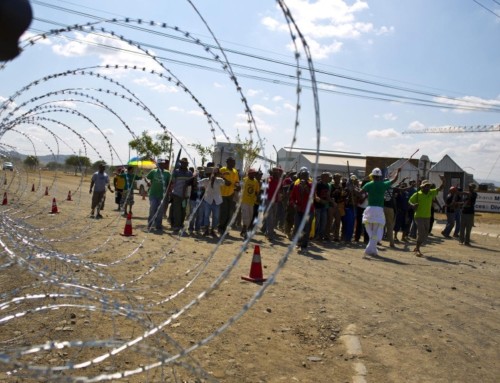
A cutaway showing the internal structure of the earth. Image by Teachastronomy.
ZIMSEC O Level Geography Notes: The Internal Structure of the Earth
- The internal structure of the earth is the foundaiton upon which the external landforms on the earth’s surface stand.
- Although no on knows the exactly the activity that goes on beneath the earth’s surface two major sources of information have been used to paint a picture:
- Drillings made into the earth during oil and mining operations the deepest oil wells are currently around 12.3 Km in depth offering unique insight into the structure of earth.
- Information is also collected from seismic activity such as earthquakes and tremors.
- This information has led scientists to conclude thus far that the earth is made of three layers of different material.
- These layers are arranged starting from the surface going inwards: The crust, the mantle, (these two are seperated by the Gutenberg discontinuity from) the Outer and Inner Core. Please note the discontinuity is between the Crust and Mantle and the Outer and Inner core.
The Crust/Lithosphere
- This is the outer layer which is also known as the lithosphere.
- It is the thin skin forming the outer layer of the earth’s surface.
- It is made up of two rock layers.
- The sial and the sima.
a) Sial
- Is also known as the continental crust.
- The main rocks in this layer are made up silica (scientific name Si) and Aluminium (Scientific name Al) hence the name Sial.
- Since this material is less dense than most of the elements on the earth’s surface they tend to form the earth’s upper crust.
- It is the continuous layer which forms the earth’s continents.
- It is therefore not a single solid layer as the one does not have one continuous continent.
- It has a maximum has a thickness of about 70 Km in some places (The Geography Today text wrongly says 20 Km).
- It ranges between 5-70 Km in thickness.
b) Sima
- Is also known as the oceanic crust.
- Is denser (heavier) than the sial layer.
- It is the layer that is underneath the sial which forms continental masses.
- It forms the floor of the seas and oceans.
- The main rocks in this layer are made of silica (scientific name Si) and Magnesium creating the portmanteau sima.
- Sima averages about 6-10 Km in thickness.
- The crust is separated the mantle by the Mohorovicic discontinuity.
The Moho discontinuity is the boundary between the lithosphere and the mantle.
The mantle/mesosphere
- Is mainly composed of silica and magnesium and rocks rich in iron.
- This rock is also known as the olivine rock.
- The rocks in the top layer of the mantle are solid.
- The lower layer rocks (called the asthenosphere) has rocks that are in a semi-molten state.
- It reaches depths of about 2 900 Km into the earth.
- Temperatures within the mantle reach as high as 5 000°C.
- These high temperatures generate convectional currents.
- This is separated from the core by the Gutenberg discontinuity after the German scientist who discovered it.
The Gutenberg discontinuity forms the boundary between the Mantle and the earth’s core. There are some texts and study guides that wrongly state that the Gutenberg and Moho discontinuity are the same. Well they are wrong and you should ignore them on that point.
The Core.
- It is the most dense and heaviest part of the earth.
- Experts think it is metallic.
- Comprising of the metals nickel (Ni) and Iron (Scientific symbol Fe).
- The name of the core often abbreviated NiFe.
- Temperatures here are around 6 200°C.
- The core is said to be made up of two layers:
a) The outer core
- Is liquid,plastic, or semi-plastic i.e. it is in a semi-molten state.
b) The inner core
- Which is solid because of the great intense pressure operating on it.
To access more topics go to the Geography Notes page.







